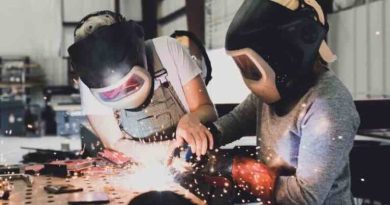The integration of STEAM (Science, Technology, Engineering, Arts, and Mathematics) disciplines within the classroom is swiftly gaining momentum in modern education. By incorporating these multifaceted areas of study, educators are equipping students with a comprehensive approach to learning.
As educational paradigms shift towards prioritizing problem-solving, inquiry-based learning, and interactive activities, several noteworthy STEAM trends are taking center stage.
Cultivating Innovation: Innovation lies at the heart of STEAM-integrated classrooms. By nurturing an atmosphere of creativity and exploration, educators inspire students to transcend conventional boundaries and devise inventive solutions to real-world challenges. This approach encourages critical thinking, while also honing skills imperative for succeeding in the 21st century.
Fostering Collaboration: Collaboration stands as a cornerstone in STEAM-infused classrooms. Through collaborative efforts, students glean knowledge from peers, fostering a profound comprehension of the subject matter. Moreover, teamwork compels students to think critically and apply acquired knowledge to unravel intricate problems, instilling them with valuable life skills and engendering a sense of unity within the class.
Engaging in Hands-on Learning: Hands-on learning occupies a pivotal role in STEAM-incorporated classrooms. By granting students the opportunity to explore and experiment with their acquired knowledge, educators facilitate a deeper grasp of concepts. This approach also nurtures problem-solving skills as students put theory into action and apply their understanding to authentic scenarios.
Promoting Inquiry-Based Learning: Inquiry-based learning is a foundational tenet of STEAM-infused education. By encouraging students to explore their own inquiries and cultivate curiosity, educators facilitate a profound understanding of the material. Furthermore, inquiry-based learning fosters critical thinking, empowering students to tackle complex problems with a solution-oriented mindset.
Nurturing Critical Thinking: Critical thinking is an integral facet of STEAM-infused classrooms. By training students to scrutinize and assess information meticulously, educators cultivate essential 21st-century skills. In addition, critical thinking spurs students to transcend conventional norms, thereby generating innovative resolutions to intricate challenges.
Cultivating Problem-Solving Prowess: Problem-solving serves as a cornerstone of STEAM-integrated education. By equipping students with the tools to deconstruct complex problems into manageable components, educators nurture competencies vital for thriving in the modern era. Moreover, this approach empowers students to think critically, ultimately propelling them to devise inventive solutions to real-world predicaments.
Incorporating STEAM disciplines into the classroom exemplifies the transformative potential of modern education. By adapting teaching methodologies to encompass these emerging trends, educators are poised to cater to diverse learning styles, nurture critical skills, and kindle the innate curiosity of students, thereby preparing them for success in the dynamic landscape of the 21st century.




